This article seeks to unfold the Chinese Communist Party’s (CCP) inhumane onslaught on the Uyghur community in East-Turkestan also known as XUAR (Xinjiang Uyghur Autonomous Region). The central aim is to draw attention to the numerous atrocities committed by the PRC (People’s Republic of China) which should be classified as ‘Crimes Against Humanity’. It will also briefly shed light on how the CCP has created a narrative on Muslim Uyghurs that essentially wages a systematic war uprooting their cultural and religious identity. In an attempt to justify the forced cultural assimilation and erasure of Muslim Uyghur identity, the perception of a Uyghur Muslim would be stereotyped as that of a separatist and terrorist. The Chinese state would forcefully intern at least a million Uyghur Muslims[1] [2] in concentration camps that would eventually carry out the cultural genocide. As an introductory article on the issue, it will briefly introduce various issues the Uyghur community faces currently and has faced in the past.
Uyghurs are an ethnically Turkic race, different from the mainland Han Chinese. They were brought under mainland China first in the 1750s and then in the 19th century by the Qing Dynasty[3]. The discrimination towards the Uyghurs has long been persistent in the PRC, and few human rights bodies have condemned it throughout the years, increasingly after the Global War on Terror (GWOT). Although alienation and forced cultural assimilation have been rampant throughout history, the intensity of the subjugation of Uyghur Muslims increased in the 80s, 90s, and especially after the 9/11 terror attacks.
Systematic Surveillance of Uyghurs
The signs of the PRC’s systematic approach to eliminate the ‘terrorists’ threat were evident from as early as 2014, as the state’s military contractor laid down the basis of an Orwellian state[4]. A massive database was created that recorded minute details of Uyghurs, and a separate file for each person was maintained. DNA tests, fingerprints, voice, and face signatures were recorded in a database, and this large-scale collection of biometric data was carried out under the name of a “health check”[5].
Omnipresent cameras in streets, restaurants, schools, mosques, hospitals and “frequent checkpoints, omnipresent small police stations”[6] monitored each and every movement of the Uyghurs. Their faces were tracked, which were then uploaded on Apps, collecting data of their daily interactions, texts, messages, calls, communications, etc. Spyware was installed on their phones tracking their movements through GPS. Henceforth, PRC successfully instilled a fear of internment into the people by monitoring their daily-life movements, even recording their purchase of kitchen knives, gas, fertilizers, or anything that suggested “unusual activity”[7].

By August 2016, Chen Quanguo was appointed to oversee the Uyghur region, after his ‘excellent’ performance in the Tibet Autonomous Region (TAR) as he significantly suppressed public dissent[8]. Chen’s systematic approach of detailed data collection and individual profiling of Uyghurs would become apparent from the leaked documents of the internment camp, the ‘Karakax List’[9], which clearly breaks down boundaries of human privacy.
Initiation of the Cultural Genocide
On March 29th 2017, De-extremification regulations were adopted by the state, which virtually launched a war against the Uyghurs. The regulations restricted Uyghurs from practicing Islam in public and eventually in private. Any Uyghur could be arbitrarily abducted, especially those who violated any of the numerous laws, and forcibly taken to ‘re-education centers’.
Sean Roberts points out the biopolitical logic that was eminent in PRC’s approach to the ‘re-education’ campaign articulated by the Public Health[10], which portrays how Uyghurs were treated as a disease that the state had to cleanse in a scientific manner. Zenz, for example, cites state documents that analyzed that “70% of Uyghur villagers” would follow their orders but 30% were “polluted by religious extremism” and would require “concentrated education”[11].
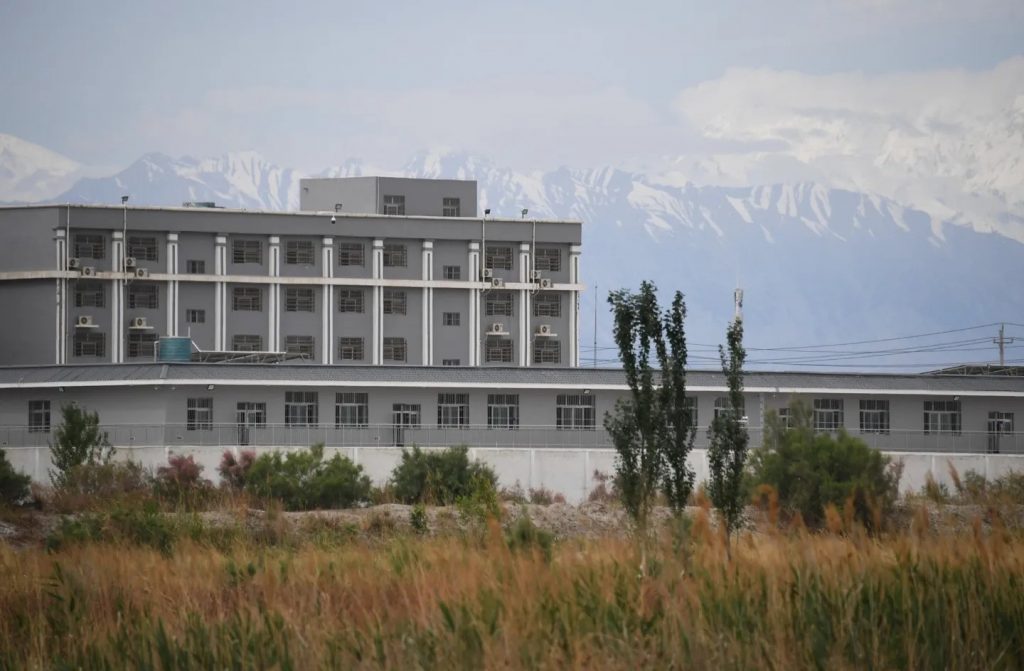
PRC’s Campaign of ‘inoculating’ the ‘infected’ would begin as hundreds of thousands of Uyghurs of all ages would be forcefully taken to the ‘re-education camps’. China would initially deny any reports of camps, stating, “there is no such thing as re-education centers”[12], and later would accept it saying it is to curb the ‘extremism’.
Shawn Zhang’s research locates detention facilities (cultural sites, and mosques that have been razed down)[13] in XUAR. This plethora of satellite imagery and the abundant testimonies clearly show how the state has been carrying out a cultural genocide through forced incarceration into ‘re-education centers’, razing down cultural sites and mosques. This ample evidence of concentration camps is sufficient to admit that China is guilty of crimes against humanity.

The Absurd ways of landing up in a concentration camp include having a full beard, abstaining from alcohol, pork, or cigarettes, praying, fasting, merely knowing someone abroad, etc.,[14] and those who didn’t comply with these draconian regulations were called “scum of the Chinese people” and “bewitched by extremist religious ideology” as per the then Deputy Secretary-General of the oasis town of Turpan.[15]
The Persistent Torture in the Camps
CCP’s inhumane nature of violence, torture, and killing can be accounted from the testimonies of inmates that escaped the country. They have testified on the regularity of torture faced as prisoners. An anonymous guard testifies:
“There were all kinds of tortures there. Some prisoners were hung on the wall and beaten with electrified truncheons. There were prisoners who were made to sit on a chair of nails. I saw people return from that room covered in blood. Some came back without fingernails.”[16]
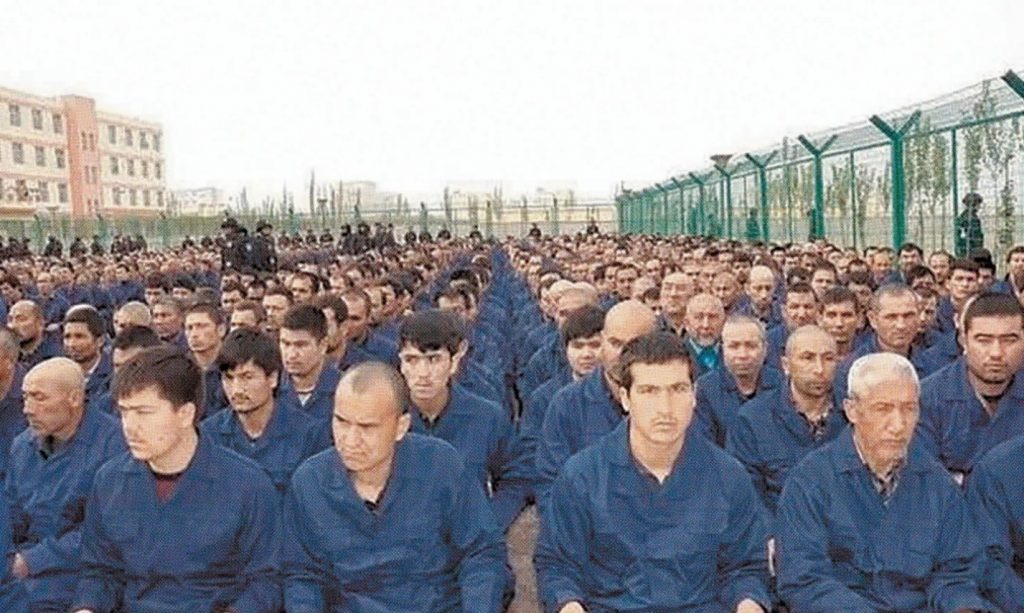
Among various torture techniques, ‘Tiger Chair’ was used which consisted of straps that nailed the limbs of a person to the chair. Inmates were put in dark rooms, interrogated, electrocuted, beaten up and even their fingernails were pulled out. Men and women, were given unknown injections, supposedly for some sort of “flu”, and “Many of the inmates suffer(d) from cognitive decline.”[17] Women have reported that their menstrual cycles stopped after taking these injections, which is evidence of forced sterilization. Moreover, women have testified on record of sexual assaults, individual and gang rapes irrespective of their age, and physical or mental health.
“Most of the time, the officer would rape the selected girl alone. Sometimes, if he is high, he would let subordinates gang rape the girls after him. After they are done, the girl would be returned back to the cell. The girl wouldn’t say anything, but I could see her tears from the camera. In the cells, they are not allowed to cry, not allowed to express their emotions, and not allowed to talk. Because of those restrictions, they can’t vent their emotions, so their mood can be extremely dreadful.”[18]
A crucial objective of the subjugation and torture was eradication of their faith, Islam. They weren’t allowed to offer their namaz (obligatory prayers), du’as (supplications), and in winter season when they had gloves on, the guards used to check their fingers to see whether they are doing adhkaar (remembering Allah). A lady in exile testifies in an interviewing saying “We don’t need this, we do adhkaar in our hearts”. Their faith in Islam proved to be central, to their identity and the political struggle against the CCP, meanwhile CCP’s primary objective is to assimilate the Uyghur Muslims into what they believe is a “Chinese citizen”.
Rotten Seeds of the Red Pomegranate
The prominent method of th cultural assimilation throughout history was through an imposition of Mandarin, which has been extremely forceful and rampant in the past few years, aiming for an erasure of the Uyghur language. The erasure of the traditional Uyghur Culture and religion is also achieved through the demolition of mosques, destruction of graveyards, and building of new construction that are distinctly ‘Chinese’.

This Sinicization of the Uyghur Muslim history and cultural assimilation of Uyghurs is Xi Jinping’s foremost policy in transforming the ‘troubled’ region. Chen remarks in one of his speeches, “It is an era when all Chinese sons and daughters [Zhonghua nu’er – racially Chinese] work together with one heart and strive to realize the Chinese dream of the great rejuvenation of the Chinese nation,” Xi remarked at the Second Xinjiang Work Forum that the party needs to work on ‘intermingling’ of ethnic groups to become one ‘tightly bounded together like the seeds of a pomegranate’[19]. The seeds of the Red Pomegranate Xi imagines are rotten as even the party cadre of the Communist Party of China has been directly involved in not only the enforcement of the concentration camps but a million of the cadres have been directed to live in the homes of Uyghurs with their families, monitoring their behavior under the guise of ‘home stays’. “It’s the ultimate form of surveillance – it’s a forced political indoctrination and assimilation program,” “It’s both creepy and perverse.” Maya Wang, a senior China researcher at Human Rights Watch. These party cadres have been ordered to carry out political education for these ‘illiterate’ families. There are also shocking reports of forced intimacy[20], as these Han Chinese men force themselves on married and unmarried Uyghur women.
PRC’s ruthless quest for cultural assimilation into an single Chinese identity is not restricted to concentration camps or ‘home-stays’ by the party cadre. There are also appalling reports of boarding schools for the kids of those parents who are interned in the camps or have escaped the country, whose children the state calls ‘kindness students’, are in reality nothing but victims of cultural genocide[21]. There are videos of children from these schools whose parents in exile are able to identify as their kids. Abdurrahman Tohti, whose wife is in prison and his children in indoctrination camps says: “What I fear the most, is that the Chinese government is teaching him [his son] to hate his parents and Uighur culture.”[22] The CCP proudly boasts about the achievements of the children’s education separated from the parents . The state says “Children whose relatives are not around are guardians by teachers. They are both teachers and parents. The school has become a warm family.”

CCP’s pursuit is to indoctrinate the Uyghurs and brainwash their children with party songs and literature. There are reports of separate ‘education centers’ for mothers with attached ‘play schools’ and also Uyghur women being forced into marriage with Han-Chinese men, as a consequence of which many of these Muslim women have committed suicide, unable to suffer the humiliation.
Apart from the central theme highlighting the crimes of the CCP regime, important topics such as the ‘Colonial History of China in the Uyghur region’, ‘the Legitimacy of the Independence Movement of East Turkestan’, ‘Communist India’s response to the crimes of CCP’, and others, all of which require a separate reading. I will briefly discuss the narrative PRC created of the Uyghur Muslims post 9/11, as I believe it to be central to the project of CCP as it has delayed and limited response from humanitarian groups and international community.
The Global War on Terror (GWOT) and Stereotyping of Muslims
As mentioned earlier, the colonial treatment the Uyghurs faced by mainland China resulted in a long struggle against the discrimination, forced cultural assimilation, and towards greater freedom. PRC’s approach towards the Uyghurs was not unlike the prior states, rather it was more exclusive and ruthless. CCP would use the post 9/11 context of rising threat of terrorism to essentially frame the Uyghur struggle as a systematically organized secessionist-separatist movement. The narrative of GWOT was crucial for CCP and its interests, as it opportunistically aimed to maximize the growing concern of the international community towards terrorist threats.
In the context of GWOT, the idea of an enemy ‘manufactured’[23] was of such gravity that it demanded America’s presence in a foreign land far away in order to eliminate the enemy. The United States’ way of marketing this war was exponentially different as even the mere existence of the enemies of the GWOT was exhibited as a threat to society. The biopolitical logic of understanding the ‘threat’ as a disease meant that the enemy was to be exterminated from its roots. The narrative at work in the GWOT implied that the actors were rouge combatants and had no political or moral legitimacy to be considered, justifying extreme forms of torture and warfare, it essentially differentiated them from a ‘normal’ enemy in war. This dehumanizing approach lead to “…Islamophobic calls for the exclusion of all Muslims from society as a means of protecting society from this ‘extremist’ strain.”[24] Roberts adds:
“I would argue that GWOT’s biopolitical logic of eradication or quarantining a threat that is culturally profiled as an ‘extremist’ strain within Islam fosters an aggressive Islamophobia that is ultimately pregnant with genocidal tendencies.”[25]
The campaign also emphasized this ‘threat’ as an International or Global crisis, which would eventually become the basis for the generalization of political Islam in the 21st century. The Chinese Communist Party would capitalize on the ambiguity of the enemy of GWOT as it would desperately attempt to recognize the group on the UN’s ‘Consolidated List’ of international terrorists. The fact that there were no prior links of Uyghurs to any terrorist groups would change by October 2001, as PRC would rebrand its concerns about the threats and link them to Al-Qaeda.[26] Initially, as China and U.S. would have talks on combating terrorism, US appeared skeptical of China’s approach towards the assessment of terrorists.
In October 2001, at APEC, Bush stated that PRC should not use GWOT as an ‘excuse to persecute minorities’.[27] On multiple occasions U.S. conveyed to China that the dissent in XUAR could be resolved politically rather than using counter-terrorism methods.[28] Lorne Craner, Former Secretary of State for Democracy, Rights, and Labor of the United States of America clearly objected to China’s categorization of Uyghurs for greater freedom as terrorists.[29] August 2002, the United States would suddenly change its position and recognize ETIM as a terrorist organization on the international list. However, a grave mistake the US and China would commit is that they would independently cite numbers and figures that would perfectly match, but the attribution to the so-called terrorist parties would be critically different.[30]
The United States’ and international recognition of China’s demand, to enter these organizations on a terrorist list – unheard of to regional experts working in the region at that time – would be the first step in the creation of the ‘ambiguous threat’[31] that China would exploit.
Conclusion
The ‘crimes against humanity’ that the CCP commits towards the Uyghur Muslims has been substantiated through a pre-planned concocted narrative that was methodically disseminated into the public sphere through the propagation of ‘trinity of evils’ of ‘terrorism’, ‘extremism’, and ‘separatism’ that perpetuated a false unitary threat that an Uyghur Muslim seemingly proposed.[32] PRC would deliberately dehumanize the Muslim citizen as it carried out its aggressive policies of cultural assimilation.
The shallowness of the pledge of ‘Never Again’ is apparent as the world watches the Chinese Communist Party commit a cultural genocide of wiping out the Muslim Uyghur Community. The perfect police state of PRC in East Turkestan has institutionally instrumentalized cultural elimination of Uyghurs through ‘re-education centers’, ‘play schools’, ‘orphanages’, and ‘homestays’ that constantly indoctrinate kids, adults, and elders with Communist party propaganda. The concentration camps are witness to inhumane crimes as they facilitate killings, gang rapes, sterilization, routine torture, indoctrination and forced labor under highly securitized and closed facilities, while the campaign enabled forced miscegenation & sexual intimacy, family separation, and community breakdown. CCP’s central agenda of suppression of political dissent and cultural assimilation was to ensure the elimination of Islam as a practice and faith from the Uyghur region, by enforcing restrictions on communication, restrictions on Islamic prayers, congregations, teachings, observances, prohibitions, deconstructing the religious sites and eventually replacing the idea of a Muslim community trumped by an imagined nationalist identity.
The Uyghur community in self-exile spread across different countries, desperately calls for support from the international community. The insufficient and inadequate response from human rights organizations and activists and the near-zero support from the Muslim states throughout the world remains alarming and disturbing for the Uyghur plight. Whereas, PRC’s endgame of the campaign of ‘counter-terrorism’ would be to ensure ‘stability’ in the region for the prosperous economic development of the region and country. Whether the state would be successful in absolutely erasing the Uyghur culture and religion is unknown, but what turns out to be certain is that as a highly securitized global power with political and economic coercion at an international level, it has undoubtedly succeeded for now.
[1] Amnesty International, “Like We Were Enemies in a War”: China’s Mass Internment, Torture and Persecution of Muslims in Xinjiang’ 2021
[2] Jessica Blake, Where Did the One Million Figure for Detentions in Xinjiang’s Camps Come From? [China File, January 2019]
[3] When financial restraints came up in the early 19th century, there was a debate on whether the Empire should invest in this region or not. Subsequently, there were substantial Muslim rebellions in the region and the regime didn’t “endue energy to re-establish control” over the region. (Sean R. Roberts: The War on the Uyghurs: China’s campaign against Xinjiang’s Muslims, Colonialism 1759-2001, p.29)
[4] Sean Roberts, The War on the Uyghurs, p. 202
[5] Darren Byler, Ghost World [LOGIC, Issue 7, May 2019]
[6] Sean R. Roberts, The War on Uyghurs p.3
[7] Human Rights Watch, China: Big Data Fuels Crackdown in Minority Region
[8] Adrian Zenz and James Leibold, ‘Chen Quanguo: The Strongman behind Beijing’s Securitization Strategy in Tibet and Xinjiang’, Jamestown Foundation China Brief Volume 17, Issue 12, September 2017
[9] Which is a list of internment camp members’ details and evaluation of their behavior, the list also depicts the intensity of private data collection of Uyghurs that was carried out throughout the years
Adrian Zenz, ‘The Karakax List: Dissecting the Anatomy of Beijing’s Internment Drive in Xinjiang’ Journal of Political Risk, Vol. 8, No. 2, February 2020
[10] Sean R. Roberts, The War on Uyghurs p. 203
[11] Adrian Zenz, Thoroughly Reforming, Thoroughly reforming them towards a healthy heart attitude’: China’s political re-education campaign in Xinjiang
[12] Nick Cumming Brice, ‘No Such Thing’: China Denies U.N. Reports of Uighur Detention Camps [Aug. 2018]
[13] Shawn Zhang, List of Re-education Camps in Xinjiang 新疆再教育集中营列表
[14] Tanner Greer, 48 Ways to Get Sent to a Chinese Concentration Camp Something terrible is happening in Xinjiang. [September 13, 2018].
[15] Gulishati Aihemat: Learning to use the common language of the country well is the expression of loving the motherland | 古丽夏提·艾合买提:学好用好国家通用语言文字是热爱祖国的表现
[16] See A Million People Are Jailed at China’s Gulags
[17] Ibid
[18] Ibid
[19] Steven Jiang, Chinese Uyghurs Forced to Welcome Communist Party into Their Homes CNN 14th May 2018
[20] Ibid.
[21] China calls them ‘kindness students.’ They’re actually victims of cultural genocide. The Washington Post, January 2020
[22] Amy Qin, In China’s Crackdown on Muslims, Children Have Not Been Spared
[23] The idea that the war was ‘manufactured’ indicates the media’s role in creating the narrative of the war, it constantly advertised the war for the populace, which essentially demonized and dehumanized the enemies of the war. The notion of ‘manufacturing’ has been taken from Noam Chomsky, Manufacturing Consent: The Political Economy of the Mass Media
[24] Sean R. Robert, The War on Uyghurs p. 17-18
[25] Ibid p.18
[26] Ibid p.68
[27] Dewardric L McNeal and Kelly Dumbough, ‘China’s Relation with Central Asian States and Problems with Terrorism’, Report for Congress RL312213, Congressional Research Service (Washington, DC: The Library of Congress, 2002)
[28] Kan, ‘US-China Counter-terrorism Cooperation’ p.4
[29] Bernstein, ‘When China Convinced the US that Uighurs were Waging Jihad’
[30] Roberts, The War on Uyghurs, p.77-78
[31] ‘Ambiguous Threat’ refers to the enemies of GWOT, and by extension, the Uyghur community. It depicts how the aggressor (i.e., China) does not tell the immediate reason for its aggression rather it deconstructs and de-legitimizes the political struggle of the community on a moral level.
[32] Roberts, The War on Uyghurs, p.68



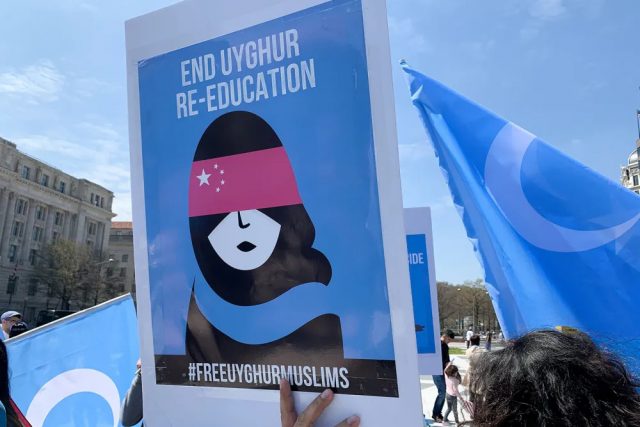
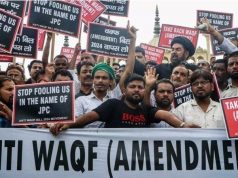
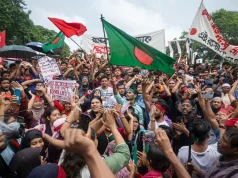

May Allah deliver our brothers and sisters from the tyrants. Ameen.